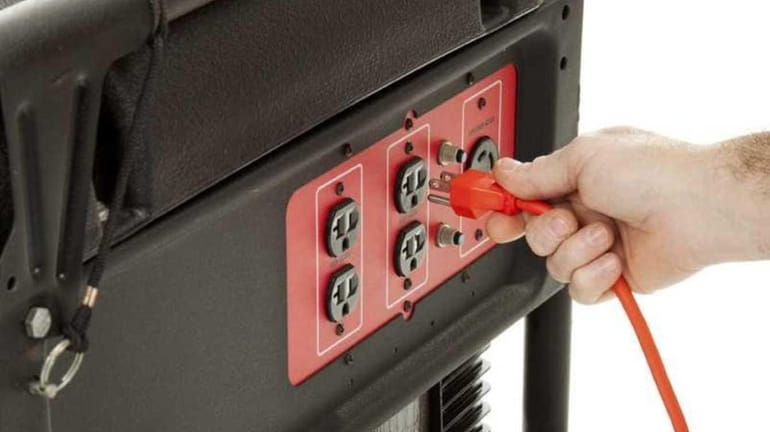Preparing a home for storms

Think about installing an emergency generator: Once the power is out, it's often hard to even find them in the stores. Credit: iStock
Here are some tips to get your house storm-ready.
1. INVEST IN HURRICANE SHUTTERS
One of the best ways to protect your windows, especially if you live near the water, is to install impact-resistant shutters that close over the window openings. If you don't want the expense, a temporary fix is to use 5/8-inch exterior-grade plywood that screws into the window frame when a hurricane warning has gone up. The screws should be 18 inches apart. At other times of the year, consider impact-resistant windows when looking to replace windows.
2. REINFORCE GARAGE DOORS
Garage doors wider than eight feet are the most vulnerable to high winds. They can be secured by permanent stiffeners, which prevent them from bending and breaking. Your door manufacturer's technical staff can also make recommendations about temporary center supports that can be installed. Another option is to park your car inside right up next to the door, which will prevent it from bowing.
3. SECURE YOUR ROOF
Check to see if your roof has been secured to the frame with hurricane clips. "Most roofs today are made of high-wind-resistant shingles and last 30 to 40 years, but it is important they are installed properly," says Sal Ferro, president and chief executive of Alure Home Improvements in Plainview. Hurricane clips and straps will prevent the roof from coming off during high winds, and it's best to have them installed when putting on a new roof. "They can be added later, but it is more difficult depending on access to the attic," he adds.
4. CLEAN YOUR GUTTERS
Two of the most damaging features of all hurricanes are wind and rain. "It's really important to keep your gutters and leaders free of debris, especially before a hurricane because basements can get easily flooded if the gutters are full," says Bill Kirby, owner of Kirby Contracting in Merrick.
5. REMOVE DEAD TREES AND DEBRIS
Most of the damage last year came from trees uprooting and falling onto homes. "It is important to safety to prune trees every three to four years," says Ken Zacconi, owner of K&A Tree Service in Merrick. "The problem last year was that many of these trees were not properly maintained, and they were too close to the house." Maple trees and red oaks have shallow roots, and will uproot and get broken limbs. Pine trees will also uproot because they are tall and skinny. "It's best to take some off the top to make them stronger," he adds. "By trimming trees and shrubs around your house, they will be more wind resistant. A tree should not be closer to your home than it is tall."
6. BRING IN ALL FLYING MISSILES
Before a storm hits, bring in (or secure) anything that could become airborne. This includes lawn furniture, tools, ladders, lawn ornaments, wind chimes, garden tools, grills and garbage cans. Secure them in a garage, shed or basement. Do not bring in a propane tank because it could explode in the house, causing a fire.
7. INSTALL A GENERATOR
Think about installing an emergency generator. The time to buy one is way before a storm hits. Once the power is out, it's often hard to even find them in the stores. Make sure you have plenty of gasoline on hand to supply it. When the power is out, gas station pumps sometimes don't work, so fill your gas cans. A generator should be installed outside the house, not inside, to prevent carbon monoxide poisoning.
